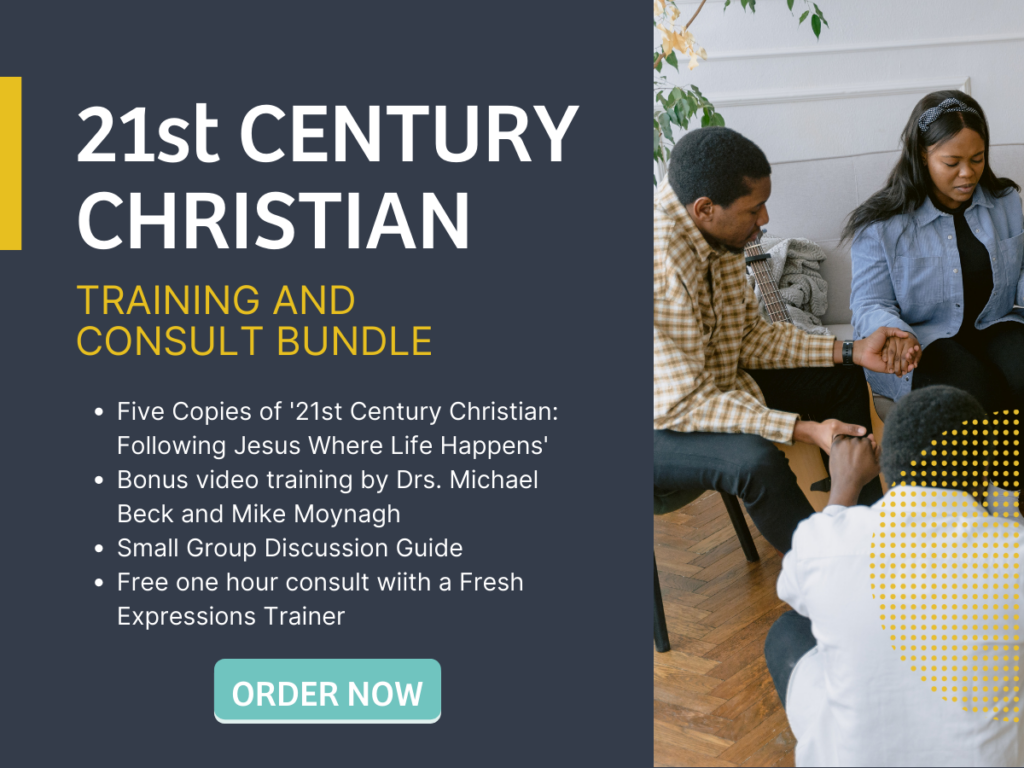Over a decade ago, Willow Creek, an iconic American church, sought to ‘engage’ its neighborhoods by inviting Randy Frazee to do what he called “the neighborhood initiative.” I don’t know the finer details, but the basic idea was to form groups within geographical zones that could get to know their neighborhoods.
These groups would do life together, engage their neighborhoods, and pray for neighbors. The goal was to relationally open new spaces among people that would never come to church. They would gather around mission first, all else would flow from there. This was a bold move by Willow Creek because it ran counter to the cultural orbits Willow had cultivated for years.

This caused a bit of a disruption at the church. It changed the nature of their small groups. It was a big ask to require people to gather weekly in their neighborhoods around mission, versus the affinity they already had with friends. Randy Frazee soon departed and took his neighborhood initiative south to Texas, where he was from originally. This was a long time ago and—again—I do not claim to know many (if any) of the details.
Willow Creek remains a large and visible church that may seem different from the average North American congregation. But I mention this episode because it’s an example of the challenge all churches face in leading their congregations to engage people outside of the Christianized populations who are still interested in ‘going to church.’
The Challenge of Engaging People on the Outside
The challenge in all this can be summarized like this: churches naturally create orbits around ‘going to church.’ By their nature, they enculturate Christians to come to the church building to get discipled, meet friends, and get their spiritual needs met, and, yes, even do the work of evangelism and justice. They cultivate dependence upon church programs for doing ministry.
With regard to evangelism, many churches cultivate an approach that says bring your friends outside of Christ to our church. Bring your non-Christian friends to a program (like divorce recovery), a seeker service, or an event of some kind where they can hear the gospel at the point of need. This again cultivates a dependence upon church programs and shapes a people to be poorly equipped to engage those people who don’t go to church and are in fact suspicious of the organized church.
Add on to this the knowledge that post-Christian populations are growing. There are more and more people outside of Christ who will not consider coming to a church. They are suspicious. Or they just don’t want to. Ironically, as much research suggests, the larger a church is, and the faster its growth, the more it grows by transfer growth (people coming from other churches to the big church), and the more difficult it is to shape a people to engage those outside the orbit of the church.
In addition, research suggests that younger populations of Christians (millennials, et al.) are more and more interested in engaging the broken world and its injustices. They are increasingly motivated by justice concerns in the world, less motivated by going to church services. They distrust authority (there is numerous research detailed by Pew, Barna, etc. on millennials, “nones,” attitudes towards church going, religion, justice, etc.). They long to be engaged. They are showing up less and less.
Add on to those dynamics another side effect of this reliance on church orbits: more and more time, energy, and leadership are needed in creating the services and programs upon which these orbits survive. Less time (and modern people don’t have much time as it is) is available for cultivating relational space in the neighborhoods and the places of brokenness for the gospel to be lived, proclaimed, and experienced by people outside of the church orbit. (I found this book and this book give quick looks at some of these statistics. But I would search Pew, Barna, and Lifeway for statistical studies and look deeply into the interpretation of what is going on.)
And so the pressure mounts on church leaders to do what theologically we already know we should be doing: leading our church to ‘Engage.’ But we have all these sociological forces which work against us. How do we do this?
Tactics vs. Strategy
There’s a tendency among leaders to try and change the direction of a large ship all at once—institute a sermon series, small group Bible studies, a program of some sort to reorient a large congregation. I suggest this almost always fails. Using the same social architecture to change the already existing architecture just reinforces the same architecture. It rarely changes anything. If anything, it just creates more frustration.
Instead of strategies, I propose tactics. Instead of strategies that plan to exert power from a hierarchical perch, I propose we engage in tactics that assume the system we live under cannot be reformed or reorganized in its entirety all at one time. Tactics are tools of the weak. They actually subtly plot to subvert the reigning system at those places where it is weak (this plays on philosopher Michel de Certeau’s work in Everyday Life). They push leaders of large organizations to start small and plant change in various places in the life of a church where new life can sprout, be modeled, and—surprise!—where others can look on and ask what is going on and how they can get in on it.
Here are just a few of my favorite tactics that I offer for you and leadership teams to discuss.
- Start with twelve. Start by cultivating small fellowships that eat together regularly (once a week) around a table. Cultivate listening to each other, practicing presence, discerning God’s work in Christ among us, and in our neighborhoods. Cultivate prayer for the neighborhood, its people, our relationships, its issues of pain and hurt. Don’t try to do this church-wide. Start with two or three groups. Work with them. Give them time. Cultivate space for God to work in these places. When God works, He will erupt and disrupt your whole church eventually. This is the way God does a new thing.
- Start with the way you lead. Of course the leader or key leader must first change the way he or she leads. Not from a posture of hierarchy and coercion, no matter how subtle it is. Learn yourself to be present with people, including the people you work with. Disperse power. Make space for other voices. And push people to use their gifts. Give away power. Push leadership out and recognize this leadership regularly.
- Start by moving some activities from the church campus into the neighborhoods. Wherever you can, resist making programs. Do the same things you’d do in a program in the places where they are already happening in a neighborhood. Don’t start a game night in your church. Encourage gamers to find the places where gamers meet and go play games there. Instead of having divorce groups at church (only), go be present in divorce groups in the neighborhood. Process marriage issues together as part of everyday life in home gatherings.
- Start by helping individuals locate themselves in the ‘half circle’ places of their lives in the guest position. Through regular cups of coffee with people from a house group, help them see places in their lives where they can inhabit, be a ‘guest,’ and open space for God to be present. Places of hurt, brokenness, service—third spaces.
- Start by finding the apostles who can initiate house dinner gatherings and give a vision for all the above. The idea of ‘apostle’ as a gift is sometimes controversial. Nonetheless, these kind of initiator-leaders are the ones we locate first to do all the work above that our own leadership is modeling.
- Start by practicing the art of proclaiming (or reframing) the gospel at church on Sunday in our houses. From here, as we frame, teach, and proclaim the gospel in all the various ways, we set the trajectory into motion that people will learn how to speak gospel in all the spaces of our lives—the good news that Jesus is Lord of the world and is working to restore, reconcile, and renew the world, and that all are invited in to His great working.


